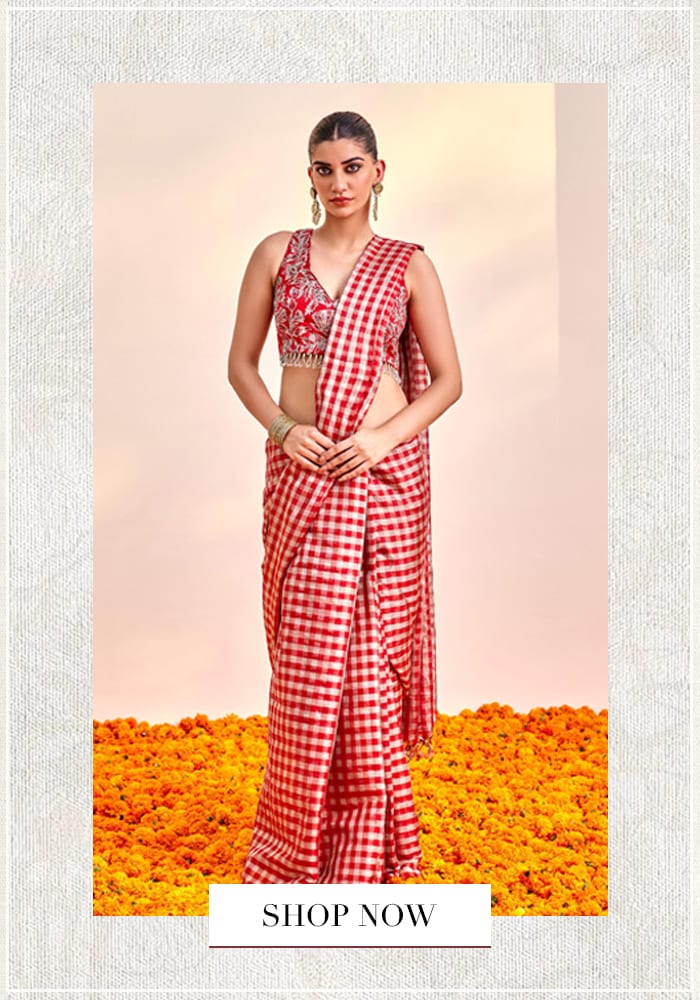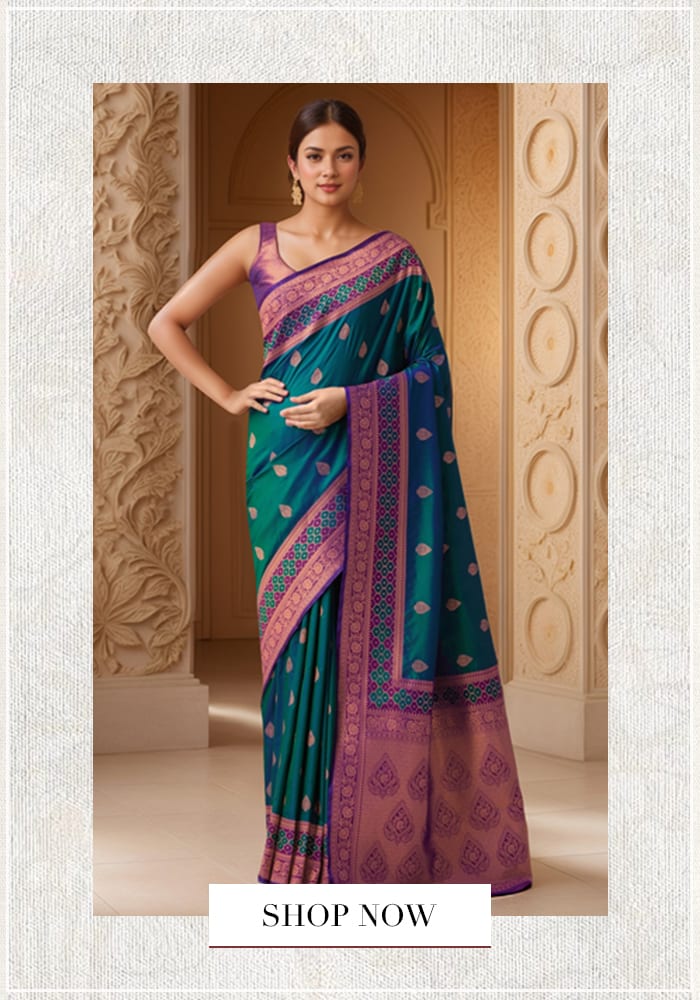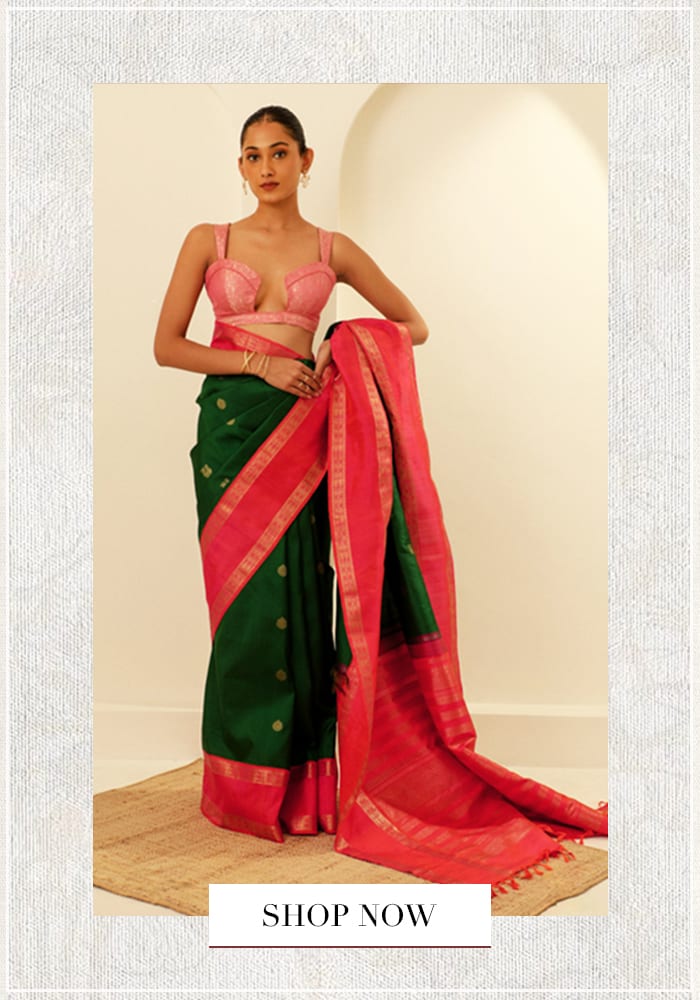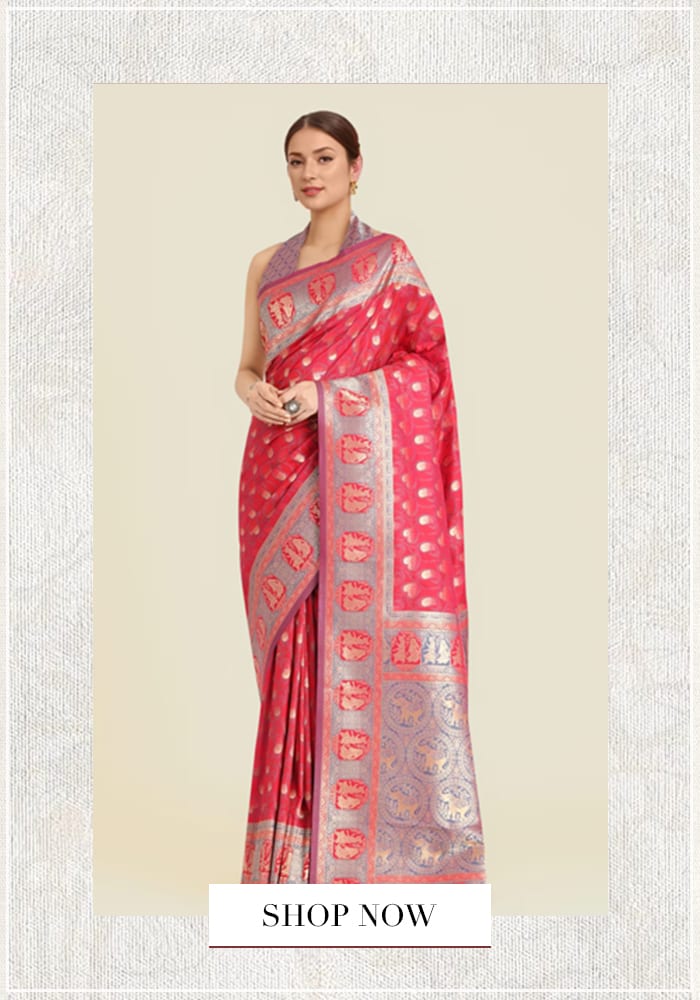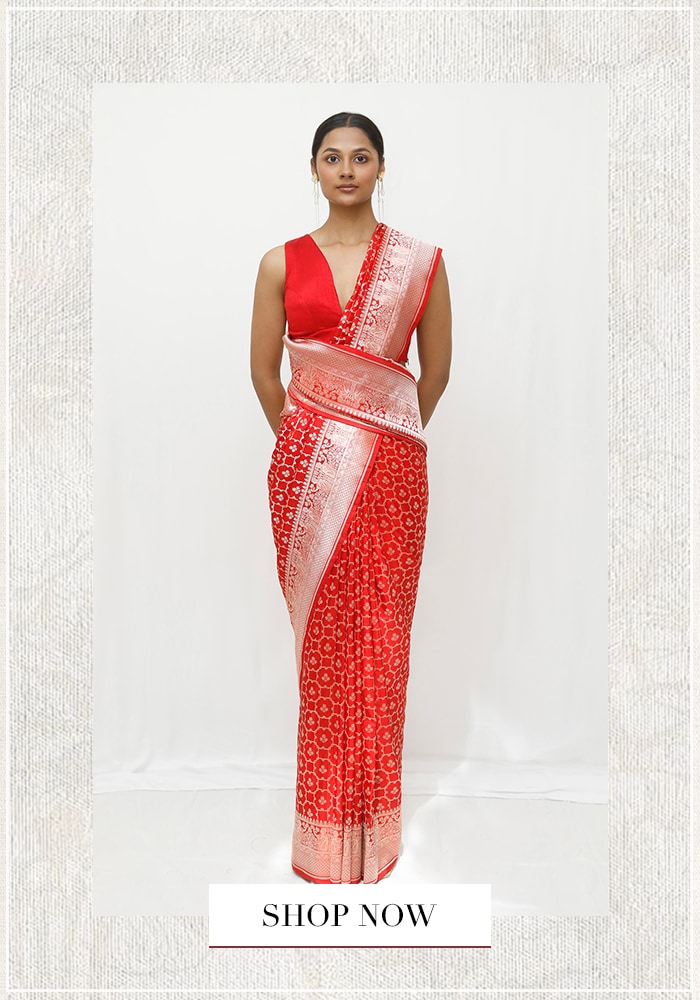India’s handloom legacy is as rich and versatile as the country itself, spun from threads of culture, traditions and time. While the luxurious sheen of Banarasi, the smooth texture of Chanderi and the opulent Kanjeevaram silks often take centre stage, a quieter universe of lesser-known Indian handlooms traditions thrives in far-flung villages and tribal hamlets.
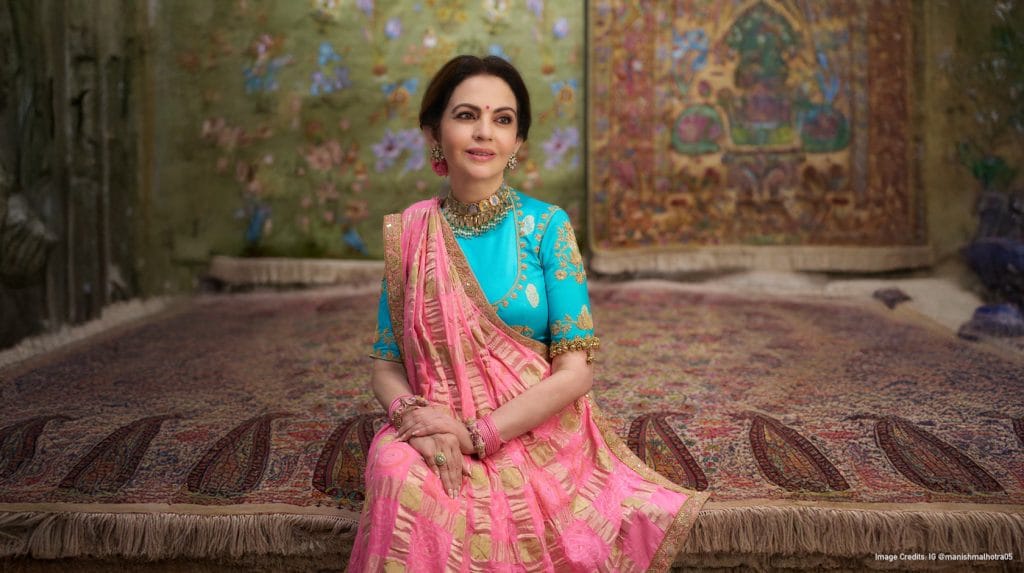
The safekeepers of cultural identity, these weaves are more than just garments. They are also reflective of the rich weaving patterns and the vast ancestral knowledge. Here, Aza shines a light on the overlooked and the forgotten treasures of the loom.
Top 5 Indian Handlooms That You Did Not Know About
Get to know about the hidden and lesser-known Indian handlooms that carry with untold stories with them and speak of artistry and cultural significance.
-
Kunbi Sarees
Originating from Goa’s Kunbi crew, the Kunbi saree transcends an attire and was rather seen as a way of life. It has ridden past the waves of colonialism over centuries. These sarees are a major part of Kunbi craft, which in later years turned into an inspiration for Wendell Rodricks, the late Goan designer. The textile was a lifestyle for the Kunbi women, who were agriculturalists for several generations. Draped short for free movement in the fields, the lightweight cotton fabric kept women cool under the tropical sun.
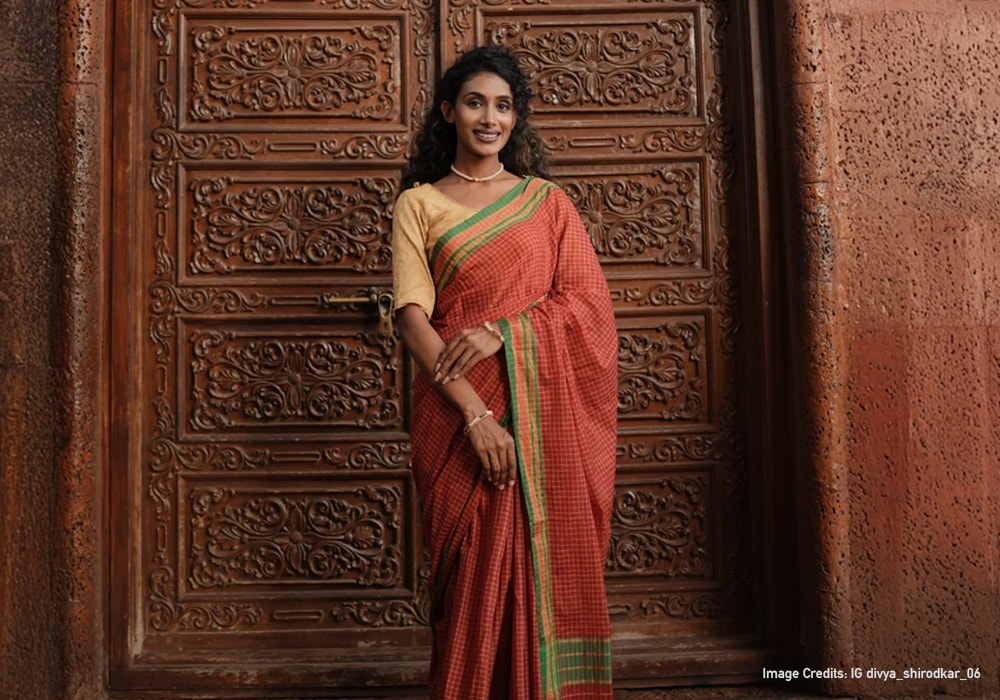
Weaving Style & Patterns
Traditionally handwoven in classic checkered patterns with dobby borders, the saree reflected simplicity. Unlike festive silks, it carried no zari, yet its craftsmanship spoke of understated elegance.
Colors Through Time
Originally dyed in naptha reds and whites, with accents of blue, green, and yellow, the Kunbi weave has now embraced pastels and lighter hues, adapting to modern tastes while preserving its identity.
Similar Looking Sarees at Aza
2) Himroo Sarees
Himroo, the forgotten traditional textile art form hailing from Maharashtra was once labelled as the “finest fabric of the Deccan” by Marco Polo. Derived from the Persian word “Hum-ruh” meaning similar, this Indian handloom draws from Persian floral and paisley motifs. The Himroo sarees are woven in pure silk and takes around 2-3 weeks to complete. The buttery smooth texture and no zari silk thread-work detailing is what distinguishes it from other varieties of sarees.
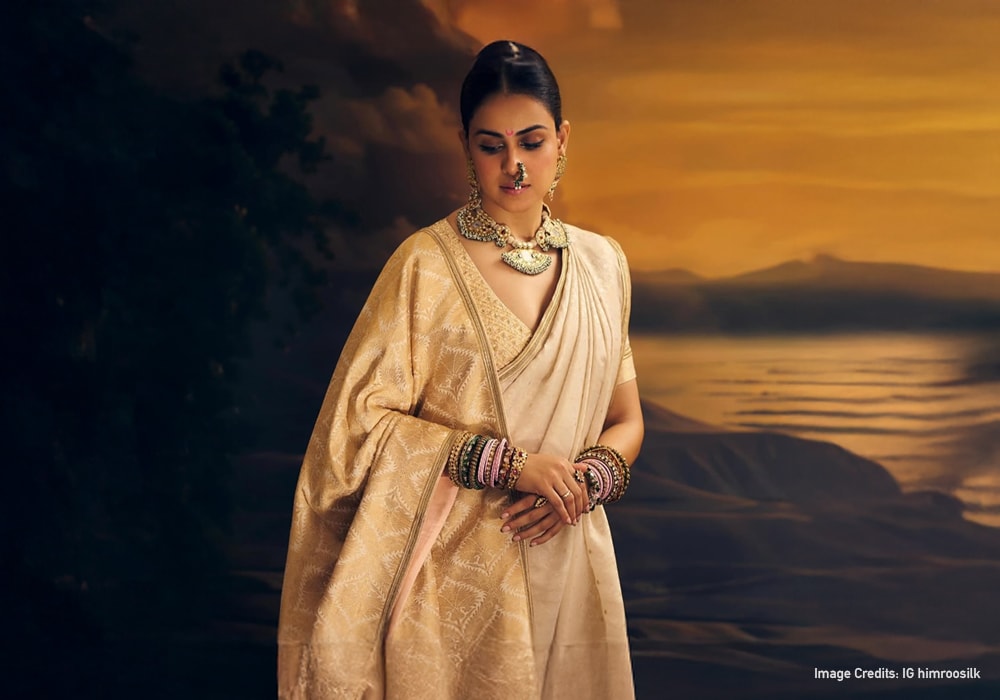
Weaving Techniques:
Himroo sarees are hand-crafted using a unique weaving pattern. The fabric is woven with a mixture of silk and cotton threads, creating an opulent texture and sheen. Featuring Persian and Mughal art inspired designs, patterns and motifs, these sarees often flaunt of traditional motifs such as leaves, geometric designs and flowers
Color Palette
Himroo sarees are available in a variety of colors with traditional green, blue, maroon and gold still reigning supreme.
Similar Looking Sarees at Aza:
3) Ilkal
Take Ilkal, a weave that derives its name from the twon of Ilkal in Karnataka’s Bagalkot district. The Ilkal sarees are woven locally with cotton warp on the body and art silk warp for the pallu and border. The series of loops, locally known as Topi Teni, joining the body warp with the pally warp is what makes this Indian handloom unique, besides increasing the length from 7 to 8 metres.

Weaving Styles and Patterns
Like most other traditional weavers, Ilkal weavers are known to have inherited the art from their ancestors with women leading the process. The stunning patterns on the pallus and the delicate borders make it a must-have for every South Indian women’s closet and beyond. Kasuti is the form of embroidery used on Ilkal sarees, comprising of traditional patterns like lotuses, elephants and palanquins.
Color Palettes
The saree’s pallu is made of red silk combined with white patterns featuring temple towers in red, parrot green, mustard and indigo shades. The bright body of the saree, however, showcases squares, rectangles and stripes and can sometimes be plain too.
Similar Looking Sarees at Aza
4) Baluchari Sarees
Embraced and cherished for its illustrative themes that showcase social life and traditions, Baluchari is a weave originating from Murshidabad, a historical city in West Bengal. Handwoven with luxurious silk, this saree features detailed artwork that reflects Indian mythology and folktales. An outcome of Baluchar’s unique art form, Baluchari sarees created a style statement during the Malla era.

Weaving Style and Patterns
The Baluchari saree is a masterpiece of Bengal/s weaving legacy. The weaving starts with cultivating silkworm cocoons to produce pure mulberry silk, which is then softened, dyed and stretched into a crisp yarn. The detailed motifs are first sketched on the graph paper before being translated into punched cards and getting woven on jacquard looms. Based on the threads, Baluchari variants encompass Resham (single-colour silk threads), Meenakali (multi-coloured threads with intricate craftsmanship), and Swarnachari (gold and silver threads).
Color Palettes
Baluchari sarees, one of the most popular Indian handlooms traditionally featured bold jewel tones like blues, greens, purples and deep reds that were paired with contrasting borders. The modern variants, however, embrace softer and delicate pastels and muted shades too, blending heritage with modern tastes.
Similar Looking Sarees at Aza
5) Paithani Sarees
A true gem of Indian textile history, the Paithani sarees reflects a rich tapestry of history, craftsmanship and culture. They were traditionally adorned by queens and elites as a way of reflecting their status and elegance. The roots of the Paithani silk saree trace back to the 2nd nd century BCE. It originated in the city of Paithan, an ancient city in Maharashtra and was reserved for the royal families. They were traditionally adorned with precious gems and intricate motifs.
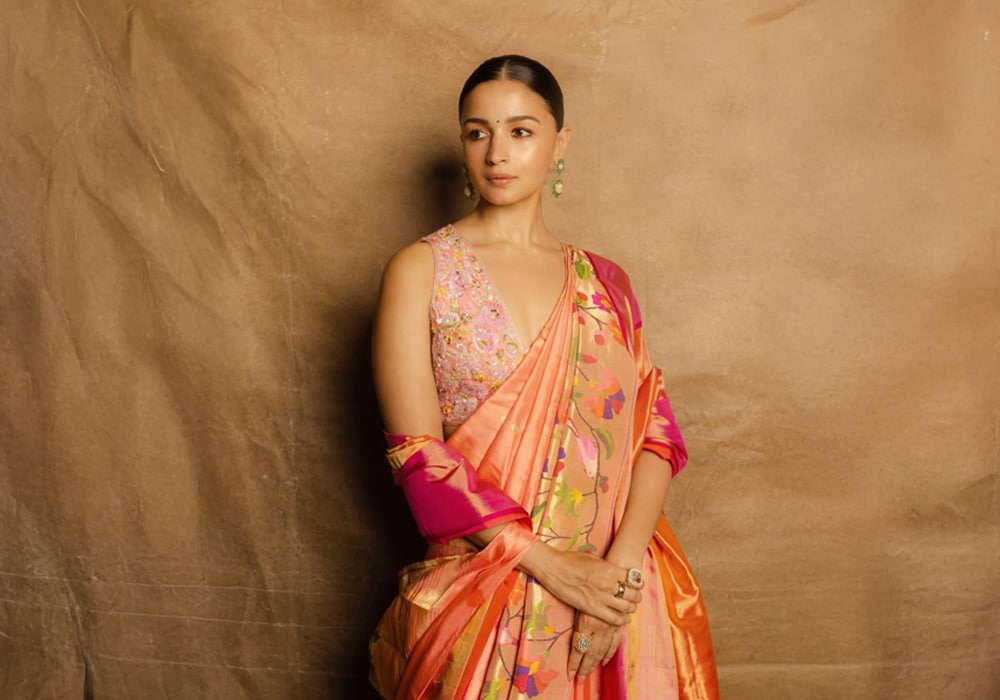
Weaving Style and Patterns
Historically, Paithani sarees were woven with silk yarns and came embellished with gold and silver threads. The process starts by selecting the finest silk threads which are thereafter dyed in bright colors. Paithani sarees are woven with extra weft technique where the weavers use additional threads to create intricate designs. The designs often showcase traditional art forms like geometric patterns, lotus flowers, peacocks, mythology and nature.
Color Palettes
Popular for its intricate designs and bold colors, this saree has been a wardrobe of Indian women, especially in Maharashtra. The natural dyes used in the making of these sarees are sourced from minerals and plants, ensuring the richness of the colors.
Shop Paithani Saree at Aza:
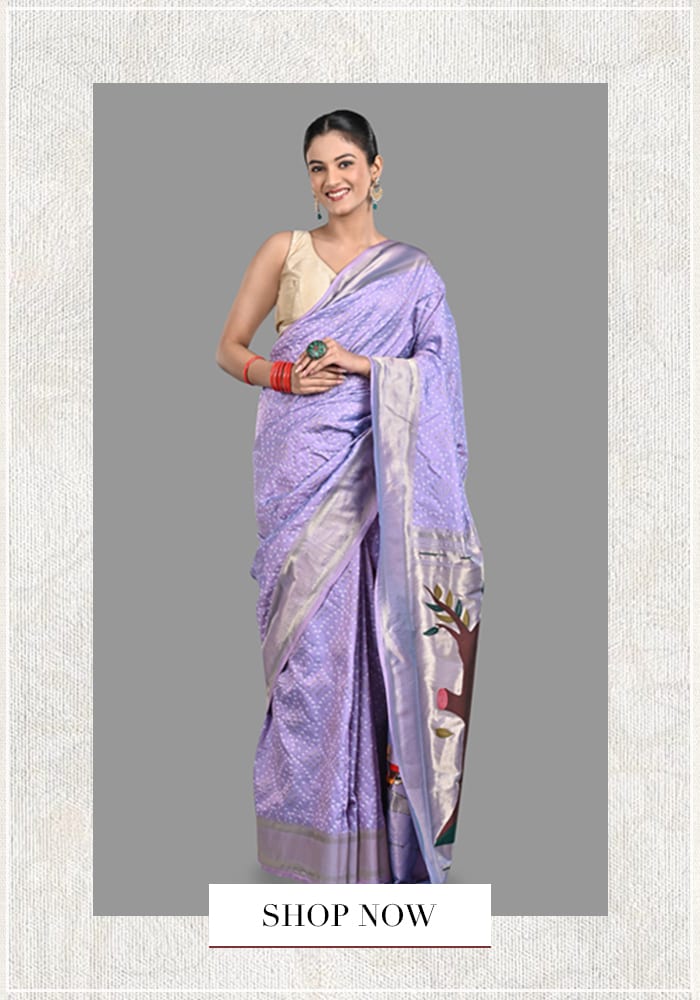
The post Hidden Weaves: Unravelling the Lesser-Known Indian Handlooms appeared first on Aza Editorials.
